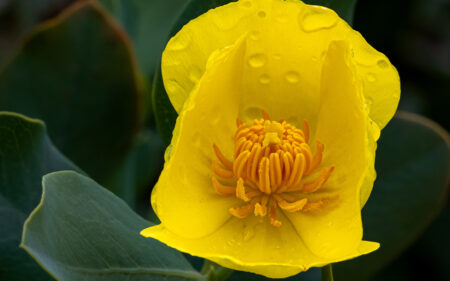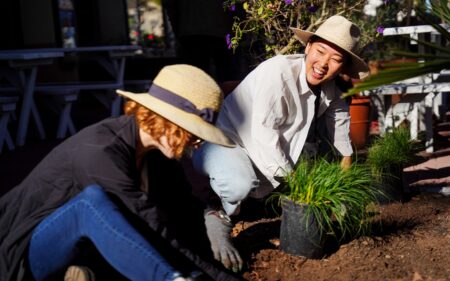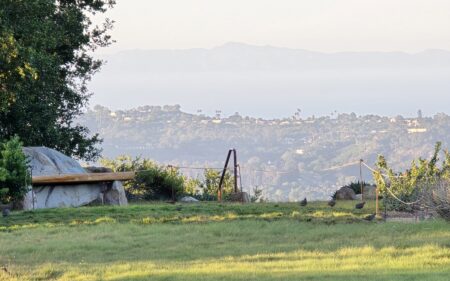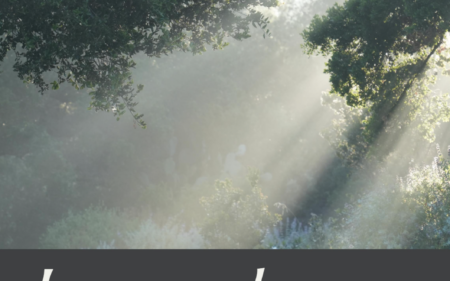Restoring the Mission Canyon Watershed
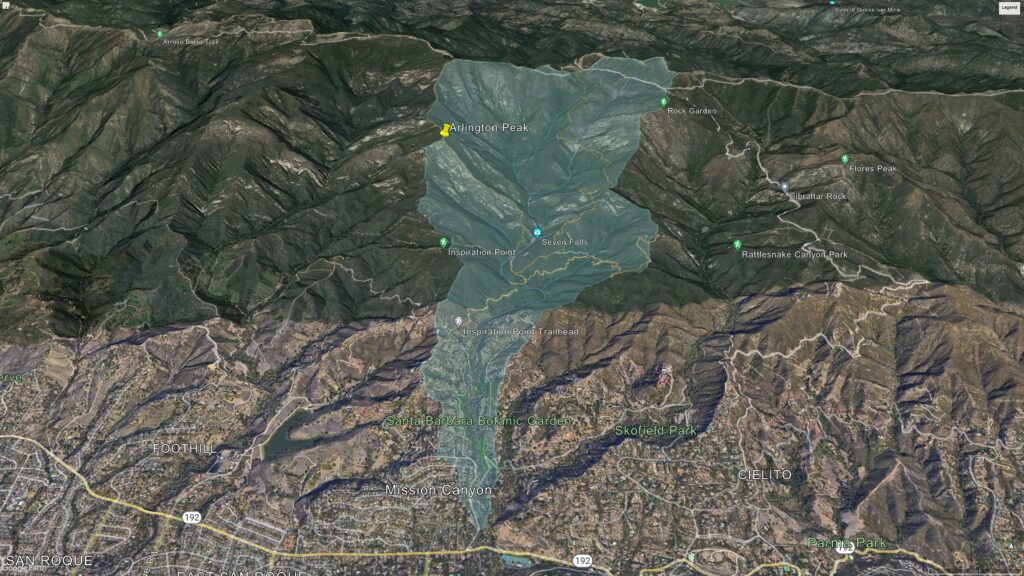
Invasive species present the greatest threat to terrestrial biodiversity globally and your backyard may unknowingly be the biggest thoroughfare. How is this possible you ask? Ornamental horticulture, plants grown for decorative and recreational gardening and sold at nurseries worldwide, are the primary way invasive plants are being introduced into local ecosystems.
While the important role of government, industry, and the public in stopping the threat from invasive plants is underway, there is still little guidance for everyday gardeners. Yet you, as a home gardener, are the best line of defense. By choosing native or non-invasive plant species, you can help stop plant invasions from the start!
The Many Benefits of Native Plants
A large number of native plants are attractive and have the potential to be used as ornamentals. Native plants provide a wealth of colors, textures, varying heights, and bloom times, resulting in a stunning display across seasons. Besides the ornate value, native plants are more adapted to the local conditions (drought tolerant) so they are more likely to establish themselves, and require low maintenance compared to non-native plants. Additionally, native plants create a natural habitat for wildlife that is both beneficial to the environment and adds life to your outdoor space (pollinators, birds, and butterflies). They also help create homes for small animals, warm and cold-blooded, and even microscopic organisms in the soil.
Introducing the Mission Canyon Biodiversity Project
Aligning with our mission to conserve native plants for the health and well-being of people and the planet, the Garden launched the “Mission Canyon Biodiversity project” in 2021 which is funded by Southern California Edison. The project aims to increase awareness about the impact invasive plants have on our local ecosystem and the value native plants hold in its recovery. Funding was provided to the Garden with the intention to deliver upon the following mission statement:
“This project shall focus on the removal of invasive species and re-establishment of native species, particularly those native species that have been extirpated from the area. This project shall commence at the headwaters of Mission Creek and progress downstream as funding allows. This project may include restoration efforts to increase slope stability, improve water quality, and manage invasive species spreading along trails and roadways in order to protect native habitats within the Mission Creek watershed.”
To ensure we make the most of the available funding, the Garden has divided this project into four phases.
Let the Work to Restore Begin | Phase One
The first phase of work was conducted during the spring and summer of 2021 and focused on mapping invasive species along the Mission Canyon Creek. To achieve this, Garden staff and volunteers surveyed accessible trails, roads, and creek beds. Surveys focused on invasive species identified by the California Department of Food and Agriculture (CDFA) or California Invasive Plant Council (Cal-IPC) as high-impact or high-risk species. This included all CDFA A- and B-rated weeds, as well as Cal-IPC high or moderate impact species that have been recorded regionally in the past. Species were observed and uploaded to iNaturalist using smartphones and then compiled into a public report.
In completing the survey of Mission Canyon, we now have a good sense of what invasive plants we’re dealing with and where they are located. Next up, get them out of there with a little help from our friends.
Gathering to Combat Invasive Species | Phase Two
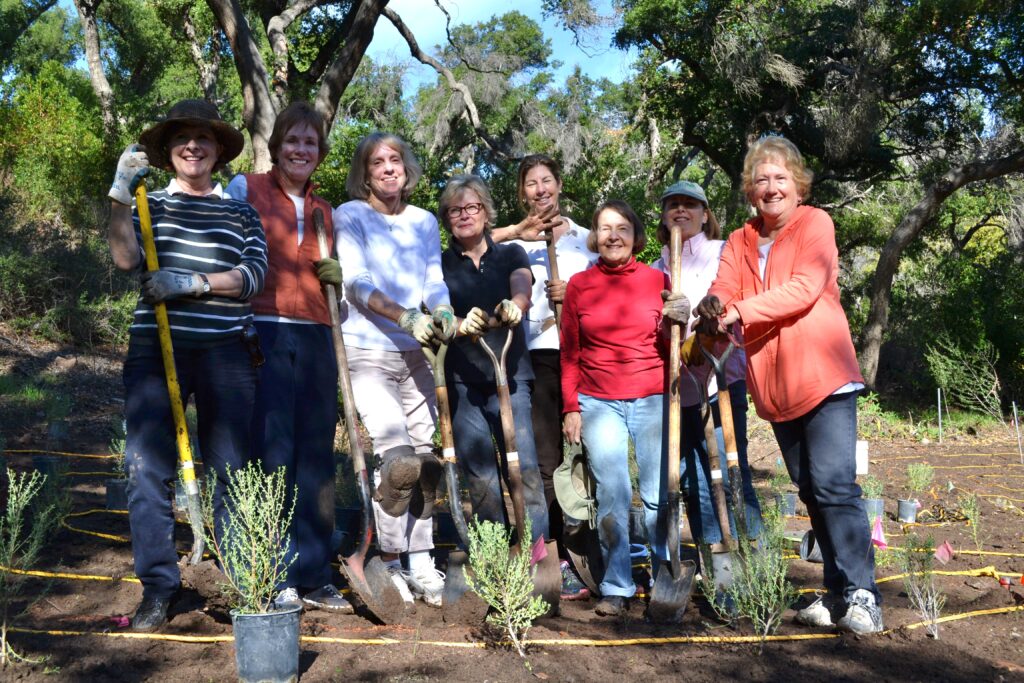
With the weed mapping report complete, phase two of the project will begin in the summer of 2023 and will likely run through the end of year. Our surveys and subsequent report has helped us establish a baseline so we can tackle the removal of the identified invasive plants efficiently. This phase will require collaboration across our team of horticulture professionals and Garden volunteers. The Garden will be organizing a series of volunteer events to help with the removal activities both planned for the Garden grounds (yes, we found some weeds inside the Garden itself) as well as along Mission Creek. To become a Garden volunteer, please complete this volunteer form so we can stay in touch with opportunities to get involved.
We’re All in This Together | Phase Three and Four
We understand, when it comes to planting with purpose or, elevating your gardening so that it can enhance the world around you, there is a lot of information out there and little direction on how to start. In phase three of this project, beginning in 2024, we’ll be coming together as a community to tackle invasive plants. One way we’ll be doing this is inviting you to come hike with us through Mission Canyon. On these guided experiences, led by our Garden pros, you’ll get a first-hand look at common macrofauna, geology, watershed dynamic, species that rely on the health of Mission Canyon, and more. Once these opportunities are announced, you can learn more about them and sign up to join us through our Garden Calendar.
We’ll also be working with willing neighbors of Mission Canyon to identify invasive plants on their property and help them select native plant alternatives so we can keep invasive plants from making their way back into the watershed. But why wait?! If you want to get started today, check out our Plant This, Not That nursery card. This card compiles a few tips for replacing common invasive plants with native ones that will fit right into your landscape and begin providing all the benefits native plants have to offer.
 Donate
Donate
